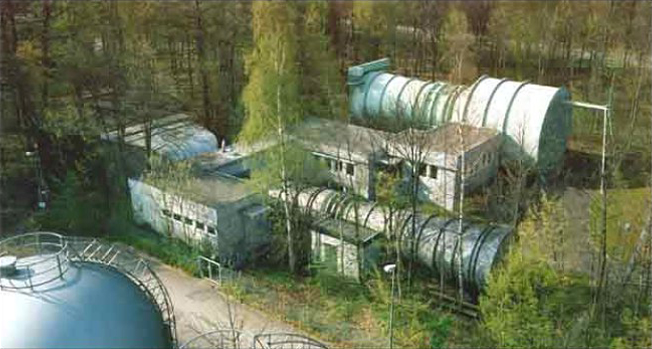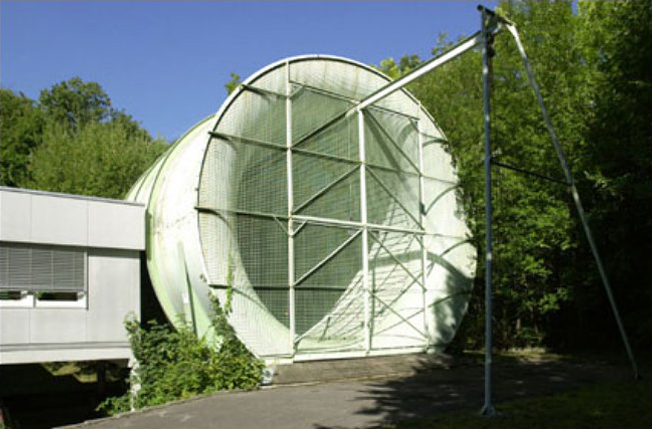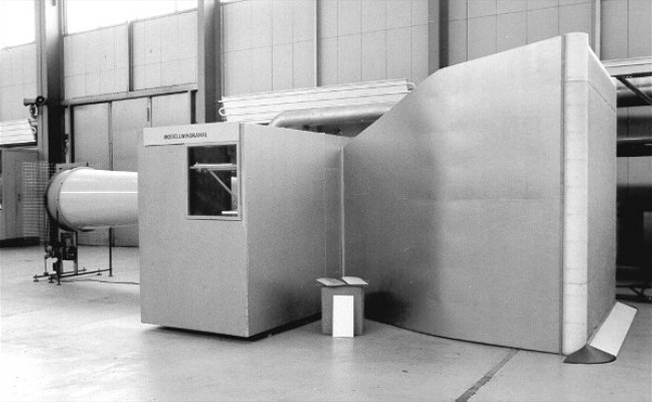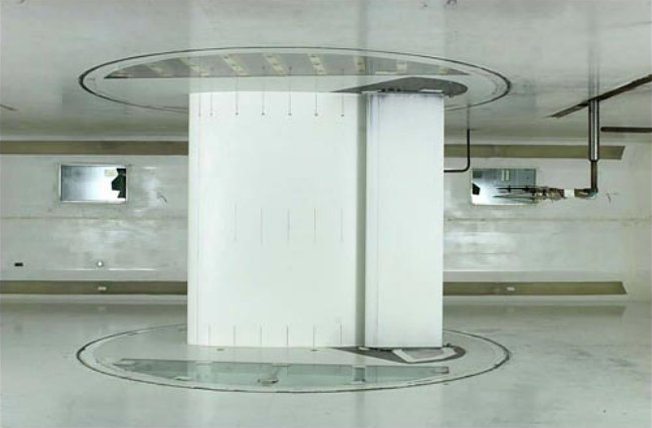|
|
| METHODS OF INFORMATION ACQUISITION FOR PLANNING
(MEASUREMENTS, WIND TUNNELS, NUMERICAL MODELLING) |  |
| | | |
 4.2.3 Locations of Wind Tunnels 4.2.3 Locations of Wind Tunnels |
Various facilities operate wind tunnels which are suitable for urban climate studies.
(Table 4/3)
| Location |
Character |
Speed range |
Dimensions |
D-38106
Technische Universität
Braunschweig
Institut für Stahlbau
Beethovenstraße 51
(sekretariat@is.tu-braunschweig.de) |
barrier |
0 - 25 m/s |
1,40 m x 1,25 m x 1,25 m |
D-30167
Universität Hannover
Institut für Mechanik
Appelstraße 11 |
|
|
|
D-44801
Ruhr-Universität Bochum
Arbeitsgruppe Aero-
dynamik u. Strömungs-
mechanik im Baumwesen
(aib@ruhr-uni-bochum.de) |
barrier |
0 - 30 m/s |
1,70 m x 1,70 m
x1,60 m |
D-52146
Ruscheweyth Consult GmbH
Würselen
Schumanstraße 29
(info@ruscheweyh.de) |
barrier |
|
1,00 m x 1,60 m |
D-52074
RWTH Aachen
Institut für Stahlbau
Seffenter Weg 200 |
barrier |
0 - 35 m/s |
2,50 m x 1,70 m x 2,50 m |
D-62074
Institut für Industrieaerodynamik
Aachen
Welkenrather Str. 120 |
barrier |
23 m/s |
2,70 m x 1,50 m
x 2,50 m |
D-75217
Wacker Ingenieure
Birkenfeld |
barrier |
|
1,85 m
x 2,50 m |
D-76128
Karlsruher Institut für Technologie KIT,
Institut für Hydromechanik,
Labor für Gebäude- und
Umweltaerodynamik
Kaiserstr. 12 |
barrier
barrier
Göttingen
Design |
0 - 20 m/s
0 - 45 m/s
0 - 25 m/s |
2,00 m x
1,00 m
1,50 m x
1,50 m
1,05 m x
0,72 m |
A-1040
TU Wien
Institut für Strömungsmechanik
und Wärmeübertragung
(helmut.sockel@tuwien.ac.at) |
|
|
|
D-70569
Universität Stuttgart
Institut für Aero- und
Gasdynamik
Pfaffenwaldring 21 |
Laminar wind
tunnel
Model wind
tunnel
Gusts wind
tunnel |
Re = 500 000
to 5 x 106
Re = 30 000
to 400 000
0-17 m/s |
|
D-67374
Ingenieurbüro Theurer - Hanhofen
Dr. Wolfgang Theurer
An den Gewerbewiesen 16 |
barrier |
|
2,00 m x 1,40 m |
D-20146
University of Hamburg -
Meteorological Institute
EWTL Environmental Wind
Tunnel Laboratory
Bundesstrasse 55
frank.harms@zmaw.de |
barrier |
0 - 10 m/s |
1,50 m x 1,00 m x 4,00 m |
Table 4/3: Locations of wind tunnels
Since the listed wind tunnels vary widely in size, the type of air circulation, the adjustable wind velocities, the type of boundary layers, the friction parameters, the measurement techniques, and the typical areas of application, it is recommended that experts be employed to assist with wind tunnel studies. The above list is given with no claim to its comprehensiveness.
|
|
| | | |
 |
| Fig. 4/13a: Wind tunnels at the University of Stuttgart, Institute of Aerodynamics and Gas dynamics | | |
 |
| Fig. 4/13b: Gusts wind tunnel, University of Stuttgart, Institute of Aerodynamics and Gas dynamics | | |
 |
| Fig. 4/13c: Model wind tunnel, University of Stuttgart, Institute of Aerodynamics and Gas dynamics | | |
 |
| Fig. 4/13d: Laminar wind tunnel, University of Stuttgart, Institute of Aerodynamics and Gas dynamics |
|
